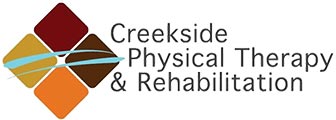
Blood Flow restriction training (BFRT) is a safe way to accelerate the strengthening of muscles and tendons. It uses low intensity exercise performed with a pneumatic cuff to simulate the muscular chemistry of high intensity exercise. This results in growth of muscles & tendons without the associated muscle soreness that you get from hard exercise. If you’ve had surgery or are recovering from an injury and have too much pain to perform strengthening exercises, this can be an excellent tool to accelerate your recovery.
For stubborn foot pain from achilles, fibular/peroneal or posterior tibialis tendinitis, BFRT is a great way to increase the amount of exercise to strengthening your tendon without exposing the tendon to more painful exercises. Even incorporating BFRT into an exercise program for plantar fasciitis can increase the rate of healing and strengthening of your foot muscles!
Researchers have found that individuals utilizing BFRT methods can see 30 - 50% increase in muscle fiber area within the first 4-8 weeks during and following training. As a reference point, high intensity training (HIT) exercise groups on average see 15 - 20% increase in muscle fiber area following a 12-16 week training period. The increased rate of muscle development allows you to feel stronger sooner, recover muscle mass lost to post-surgical atrophy, as well as get back to activity sooner.
How Blood Flow Restriction Training Works to Increase Muscle & Tendon Strength & Size
Exercise must be at a high intensity to strengthen the muscle/tendon complex or to increase muscle size (hypertrophy). Exercise over 70% of a 1 repetition maximum triggers the release of these growth hormones.
Bloodflow Restriction training uses pneumatic cuffs to simulate this higher intensity exercise. They limit how much waste products are circulated out of the muscle as well as the delivery of energy to the muscle. When exercising in this environment, the muscle (at the cellular level) must work harder than usual despite doing very low intensity (20-30% of 1 repetition maximum) exercises. Because the body ‘thinks’ it is exercising at a high intensity, hormones and other factors are stimulated and released that start the healing process.
Hypertrophy, or the increase in size of the muscle, is driven by two main factors:
-
Muscle tension: When a muscle moves weight (bodyweight during a squat or a dumbbell during a curl), the muscle & tendon experience small microdamage. As you exercise, the body releases hormones to trigger the muscle to heal and release more proteins to rebuild what was broken down.
-
Metabolic stress: When you exercise at a higher intensity, the energy system of the cells in our muscles are worked at a higher intensity. This stress triggers the release of hormones and proteins that promote healing in response to the damage caused by heavy exercise.
BFRT exercise triggers the release of growth hormone and insulin like growth factor. Both increase the rate of healing and cell growth. BFRT also decreases the production of hormones that inhibit cell growth.
In summary, BFRT ‘tricks’ the body into believing it has exercised much harder than it has. This triggers the release of healing hormones that create a pool of healing to accelerate muscle & tendon growth and recovery.
How Portland, Oregon Physical Therapits Use Blood Flow Restriction Training to Strengthen Your Leg and Foot Muscles

We use the Smart Cuffs Pro at Creekside Physical Therapy & Rehabilitation. These are FDA listed devices that can calculate the appropriate pressure that you need for your recovery. We place the cuffs as high as possible on the thigh to maximize the amount of healing hormones and proteins released.
Exercises performed with BFR cuffs should be relatively easy. For heel raises, typically seated or double leg raises are good places to start. Body weight squats would likely replace using a weight for squats. We want to aim for 20-30% of a single rep of maximum effort (1 repetition maximum) for that specific exercise.
The cuffs are inflated to your personalized pressure (usually around 60-80% of the maximum occlusion pressure) and you follow a protocol of 3-4 sets of each exercise. Typically, a BFR workout will have 1-3 exercises in it.
Safety of Blood Flow Restriction Training for Foot Pain
Blood flow restriction training can sound scary, but it is a well-researched and safe form of exercise for many people, including:
-
Individuals following surgery
-
When an individual’s pain level keeps them from exercising at a higher intensity
-
For those with chronic tendon or muscle injuries
-
For people who want to rehabilitate as quickly as possible
BFR is not a good intervention for you if any of the following apply:
-
Have uncontrolled hypertension (high blood pressure)
-
Are pregnant
-
Have open wounds
-
Have lymphedema or excessive swelling in the body part you will be exercising
-
Have cancer
-
Have a current thrombosis
-
Have clotting disorders
-
Active infection in involved limb
Summary of How to Use Blood Flow Restriction Training to Decrease Your Foot pain
Blood Flow Restriction Training is a safe & researched method to accelerate healing and tendon/muscle/bone strengthening. If you want to strengthen an area as quickly as possible or have a chronic injury that hasn’t responded well to traditional exercise, BFRT might be a good option for you!
Message us now to get scheduled with one of our skilled Physical Therapists, with two convenient locations in the greater Portland metro area!

